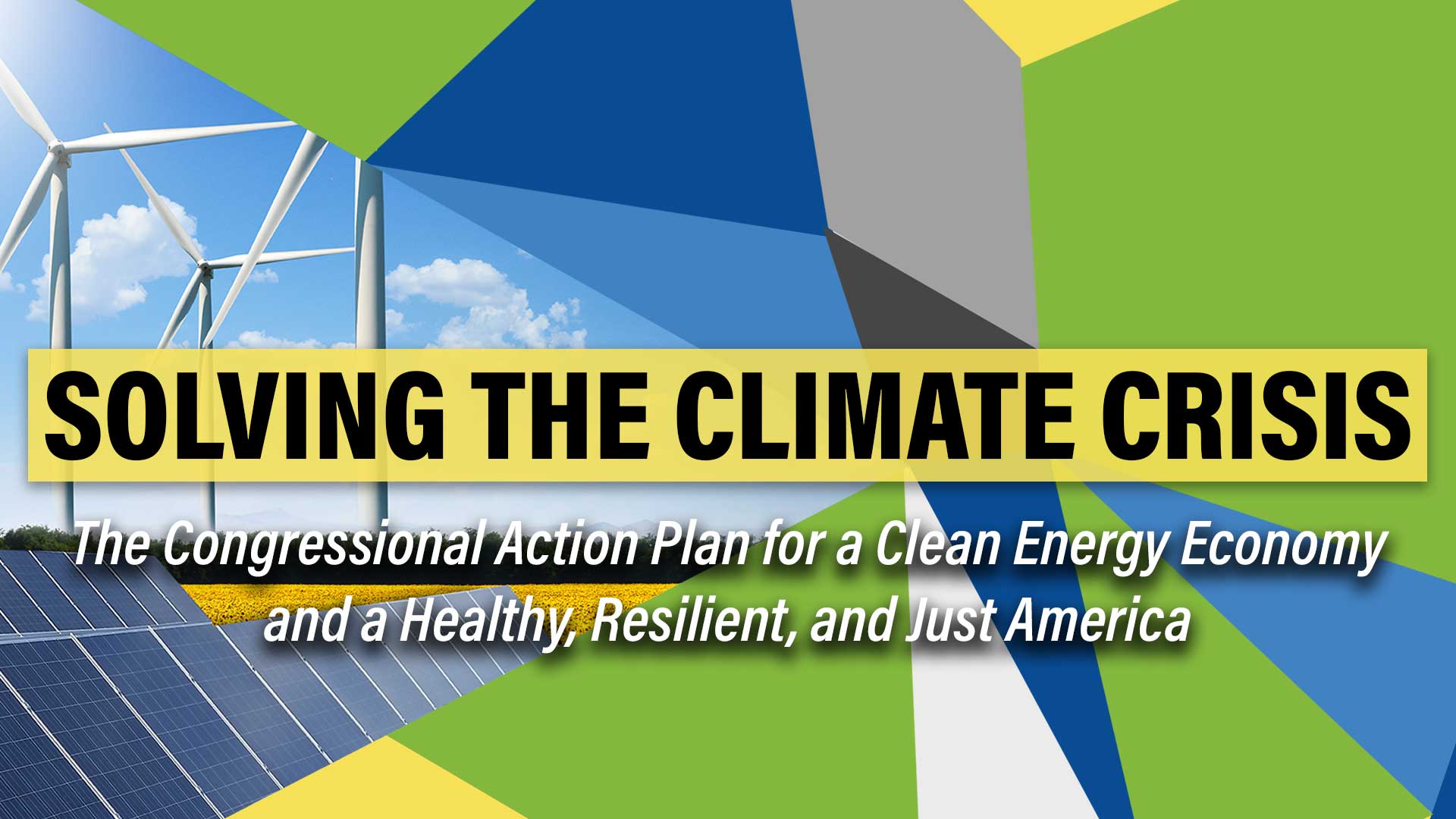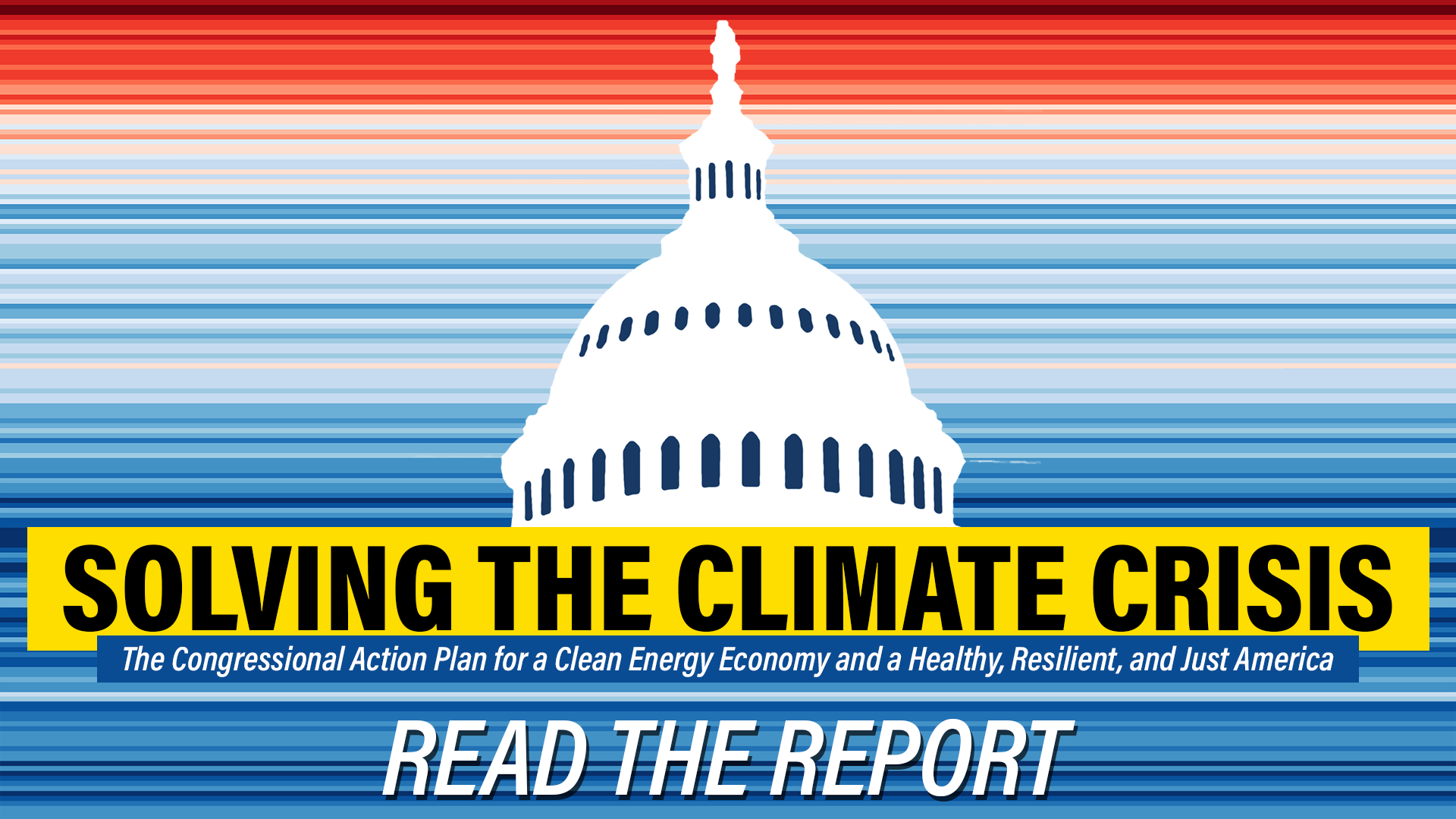Climate Action Progress
House Democrats are turning our recommendations into bills – and turning those bills into law.
Last Updated: August 17, 2022
305
Signed Into Law
436
Passed In The House
715
Total Recommendations
Grow Our Economy and Put Americans Back to Work in Clean Energy Jobs
- Support rapid deployment of wind, solar, energy efficiency, and other zero-carbon energy sources and construction of new transmission infrastructure to deliver clean energy to homes.
- Incentivize more domestic manufacturing of clean energy, clean vehicle, and zero-emission technologies along the whole supply chain and support retooling and construction of manufacturing and industrial facilities.
- Launch new economic sectors to meet our climate goals, such as direct air capture and low-carbon building materials.
- Ensure new jobs in the clean energy economy are high-quality, good-paying jobs by strengthening workers’ rights to organize a union and ensuring federal spending only supports projects that meet high-road labor standards.
Issues
Protect the Health of All Families
- Prioritize EJ communities for clean infrastructure investment, enforcement of environmental laws to address the cumulative health impacts of pollution exposure and near port and industrial areas.
- Develop a national strategic plan to help communities prepare for and respond to climate-related health risks and disasters, including frontline communities and vulnerable populations that are disproportionately harmed by extreme weather, pollution, food insecurity, and other effects of climate change.
- Prepare for the physical and mental health effects of the climate crisis by ensuring hospitals can withstand climate impacts; securing supply chains for medicine and equipment; and helping state and local governments develop response plans.
- Protect the health of workers by improving and shoring up services for coal miners with black lung disease and setting strong standards for farmworkers, construction workers, and others who have to endure severe heatwaves.
Issues
Make Sure Our Communities and Farmers Can Withstand the Impacts of Climate Change
- Launch a National Climate Adaptation Program and support state, local, tribal, and territorial governments to ensure homes, businesses, and critical infrastructure can withstand the impacts of climate change.
- Strengthen standards for federally funded projects and building codes so that housing and infrastructure are built to last.
- Accelerate resilient recovery when disasters strike by expediting disaster relief payments and ensuring any post-disaster rebuilding meets climate-informed standards against flood, wind, and wildfire threats.
- Help farmers and ranchers implement soil health practices that make their lands more resilient to the impacts of climate change, such as extreme rainfall and drought.
Issues
Protect America’s Land and Waters for the Next Generation
- Protect at least 30% of all U.S. lands and ocean areas by 2030, prioritizing areas with high ecological, biodiversity, and carbon sequestration value.
- Limit new leasing for fossil fuel extraction on public lands onshore and offshore.
- Protect and restore ocean and wetland ecosystems, forests, and grasslands to sequester carbon and improve nature’s resilience to climate impacts, including wildfire and coastal flooding.
- Create jobs through conservation and reclamation by reestablishing the Civilian Conservation Corps, creating a Climate Resilience Service Corps, and restoring abandoned coal mines and oil and gas wells.
Turning this plan into reality will build a safer, healthier, and fairer America, restore our global climate leadership, enhance our national security, and provide a livable climate for today’s youth and future generations.
Issues
Why Now?
Modeling
The U.S. House Select Committee on the Climate Crisis, created in January 2019, was tasked with delivering detailed and ambitious climate policy recommendations to Congress. In June 2020, these recommendations were released in Solving the Climate Crisis: The Congressional Action Plan for a Clean Energy Economy and a Healthy, Resilient, and Just America. Energy Innovation modeled a subset of the recommendations in the Energy Policy Simulator, finding the Climate Crisis Action Plan will lay the groundwork for net zero greenhouse gas emissions by 2050 while generating nearly $8 trillion in monetized health and climate benefits.


